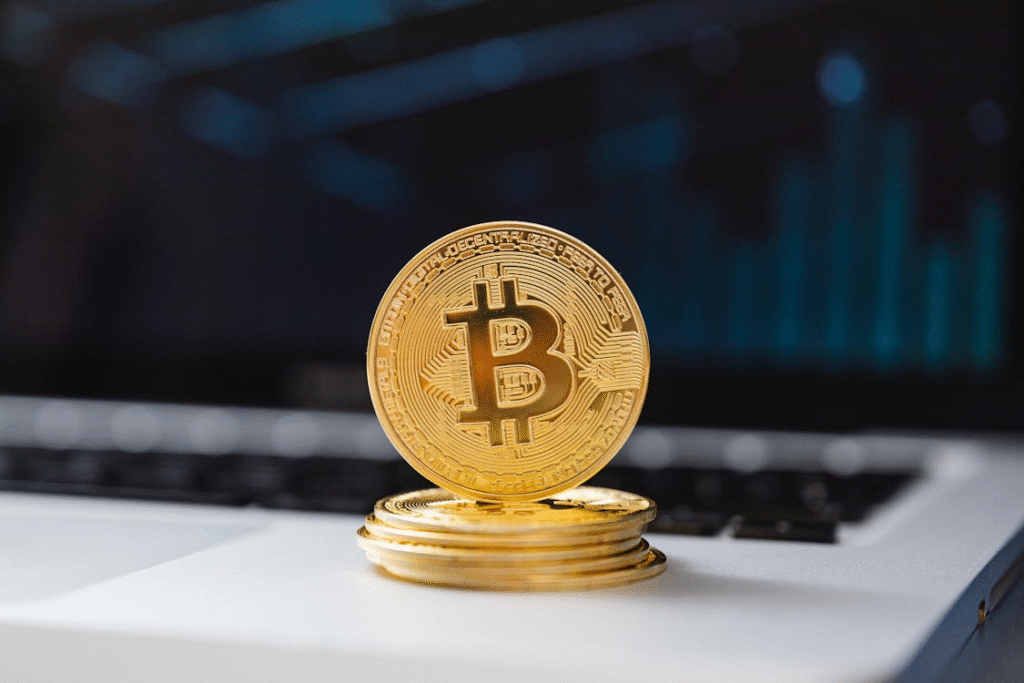Step by step guide to applying for Bitcoin, digital gold

In recent years, the term “digital gold” has been increasingly associated with Bitcoin. But what does this really mean? And more importantly: how can this concept be applied in practice?
To answer these questions, it is essential to understand why Bitcoin has been compared to gold, what its similarities and differences are, and what this represents for those who invest or want to protect their assets in times of economic instability. Check it out!
Scarcity as the Core of the Comparison
Gold has been considered a store of value for centuries. Its durability, natural scarcity, and global acceptance make it a sought-after asset for those looking for protection against financial crises and inflation.
Bitcoin, though digital, is also scarce: its issuance is capped at 21 million units, and this number cannot be changed. Additionally, every four years, a process known as “halving” cuts in half the reward given to miners.
This event reduces the creation of new bitcoins, reinforcing its scarcity and making it attractive to those seeking a digital store of value.
Decentralization and Censorship Resistance
Another key similarity between gold and Bitcoin lies in their independence from governments and financial institutions.
While physical gold can be regulated or confiscated, it has historically maintained value even outside the banking system.
Bitcoin takes this even further, being entirely digital and decentralized. It operates on a peer to peer network without the need for banks or intermediaries.
This allows anyone with internet access to store or transfer bitcoins securely and privately, a valuable feature during times of geopolitical instability.
Volatility and Adoption Challenges
Despite their similarities, Bitcoin still faces important challenges. Gold has a millennia-long track record as a safe-haven asset, while Bitcoin is still relatively new and marked by high volatility.
Its price can fluctuate dramatically within days, requiring investors to have strong risk management strategies and psychological preparedness.
This volatility currently prevents Bitcoin from being considered a fully stable asset like gold typically is during economic downturns.
Applying the Digital Gold Concept to Investing
To put the concept of Bitcoin as digital gold into practice, it’s important to shift the way we look at the asset. Instead of viewing it as a short term bet, it should be treated as a tool for long term diversification and protection.
Just as traditional investors allocate a portion of their portfolio to gold, the same can be done with Bitcoin.
General recommendations suggest starting with a small percentage of the portfolio, between 1% and 5%, adjusted according to the investor’s risk profile, financial goals, and knowledge of the crypto market.
Custody and Digital Asset Security
Another key point in applying the digital gold concept is choosing how to store your bitcoins. Gold can be stored in safes or bank vaults.
Bitcoin, in turn, can be kept in exchanges, online wallets, or physical devices called hardware wallets. Each method has its pros and cons.
Offline wallets, for example, offer greater security against cyberattacks but demand more responsibility from the user, since losing the password could mean permanently losing the funds.
Bitcoin in Times of Crisis and Inflation
The view of Bitcoin as digital gold gains strength during times of economic instability. In financial crises, currency devaluation, or when trust in banks diminishes, gold tends to appreciate in value, and a similar pattern has been observed with Bitcoin.
This behavior reinforces its image as a potential digital safe haven. While the market is still maturing, many now consider Bitcoin a modern alternative to traditional stores of value.
Staying Informed About Market Trends and Regulation
Applying the digital gold concept also means staying updated on changes in the crypto market. Regulations are being discussed and implemented in several countries, and these can directly impact Bitcoin’s usability, security, and value.
Following these developments, seeking trustworthy sources of information, and, if possible, consulting with financial professionals are important steps for anyone aiming to invest safely and with a long-term perspective.
Conclusion
Seeing Bitcoin as digital gold is more than just a modern metaphor. It’s a practical way to understand its growing role in today’s and tomorrow’s financial landscape.
With characteristics like scarcity, decentralization, and censorship resistance, Bitcoin presents itself as a viable, though still volatile, alternative to traditional stores of value.
Applying this concept to your investment strategy can help diversify your assets and prepare you for a rapidly evolving financial world.

